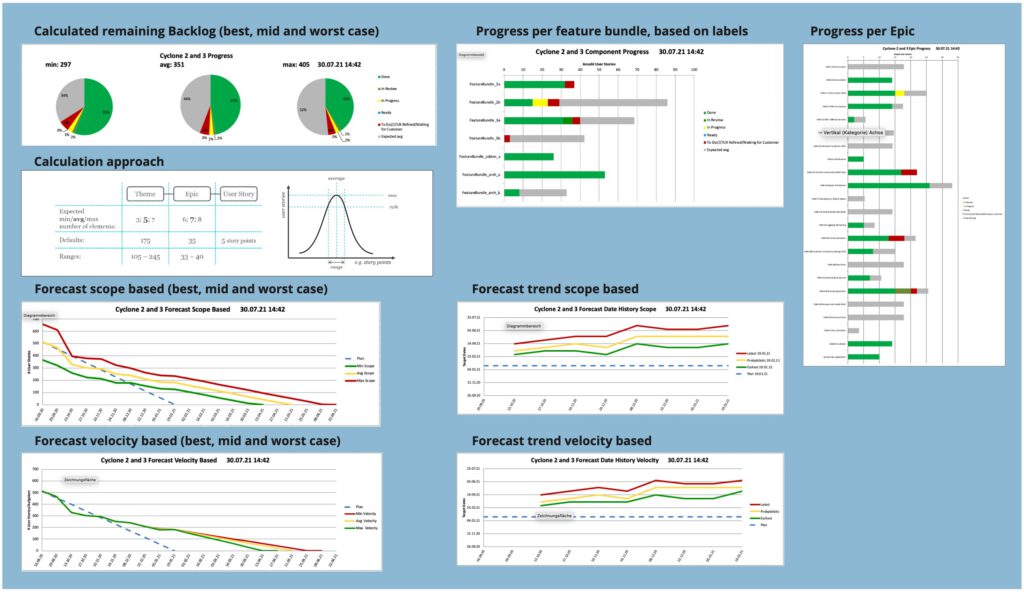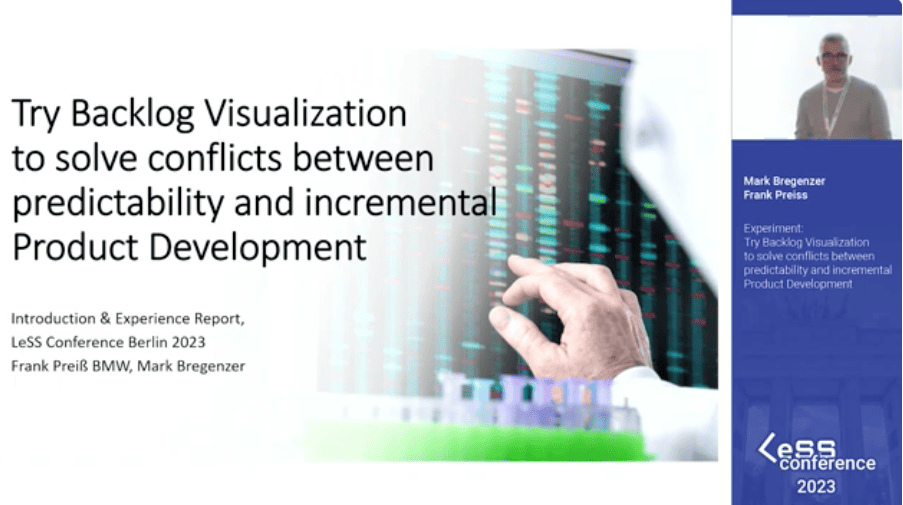Backlog Visualization Experiments

Motivation
This is the case, for example, if you introduce Scrum, LeSS or another agile way of working in a smaller part of your organization or only in a sub-project. In this case, the product owner often has to enter into agreements or even commitments with specific delivery dates with partners.
One possibility is to estimate the effort for all elements in the backlog and measure the velocity of the teams. In this way, the Product Owner could predict when a bundle of tasks related to an agreed milestone will be completed. However, this is highly speculative and defeats any agile approach by introducing an analysis and design phase before the development phase. This is a sequential lifecycle, a waterfall process.
I have been experimenting for more than ten years to solve this problem and to minimize the negative effects. In contrast to the approach of predicting the future with the help of a Monte Carlo simulation, I use a trend-based visualization of the product backlog. This initially increases transparency by showing current progress at the overall level and at three backlog levels. Combined with a statistical approach (standard deviation and queueing theory), forecasts can be made for the worst case, the best case and the probable case. This approach therefore gives an indication of what the future would look like if the organization maintains its behaviour. The aim is to make the organization think: “Should or must we change our behaviour?”. It is therefore not just about producing a report (status report). Rather, it is about reflecting on and adapting the behavior of an organization over time. With this approach, some of my clients are able to determine very quickly and without team estimates how much effort, time or money a new backlog item (topic, feature or user story) or a release cycle will require.
From Practice
At the LeSS Conference 2023 in Berlin, Frank Preiss (Domain Agile Master at BMW) and I presented this approach and shared our experiences from practice. Video

